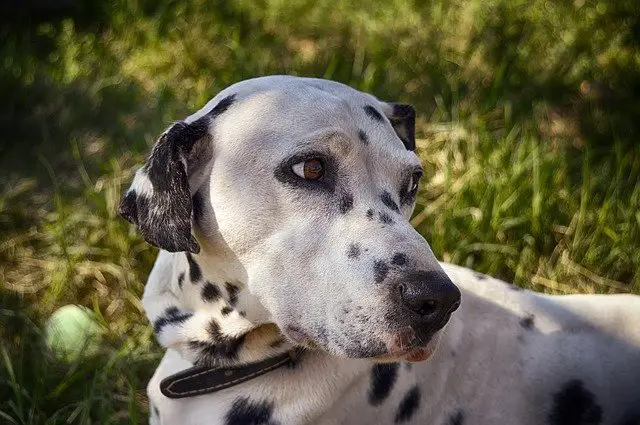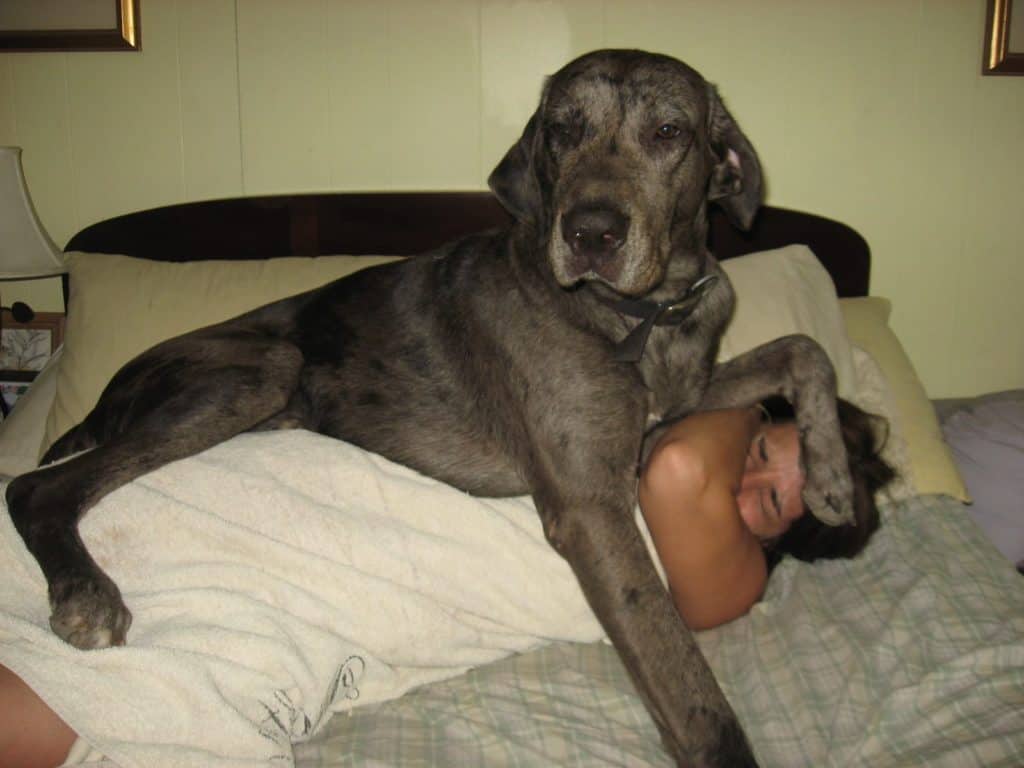
I’m sure you’ve heard of the story, 101 Dalmatians. If you’re familiar with the story, you’ll probably remember how Roger and Anita started off with a litter of far less than 101 Dalmatian puppies. So how many puppies can a dalmatian have?
What is the average Dalmatian litter?
Typically, a dalmatian will give birth to a litter of 6 to 9 pups. However, it is very common for a female dog of the Dalmatian breed to give birth to a litter with a larger amount of puppies, just like Perdy in the film, who actually had 15 puppies to begin with!
What is the maximum Dalmatian litter?
Similarly to Perdy, larger litters of 15 white, spotless newborn puppies are very common for a dalmatian – it’s become almost average. That being said, don’t be surprised if a dalmatian just gives birth to 6 or so Dalmatians.
But recently, this record of 15 pups has been broken by Melody, a Dalmatian from Albury, Australia. Melody’s owner and breeder Mellissa O’Brien helped her to deliver an astonishing 19 dalmatian puppies!
More about Dalmatian puppies
Did you know that Dalmatian puppies aren’t actually born with their spots showing? So, don’t panic if your dalmatian litter is born appearing to look like another breed entirely – newborn dalmatian puppies normally have completely white fur.
Then, at around three weeks, a litter of Dalmatian puppies will start to develop a few small, pale spots all over their coat.
Later, when the Dalmatians litter have reached being three months old, their spots will be more frequent and darker in color, but don’t be surprised if more complete dark spots appear by the time they are four months old.
Deafness in Dalmatians
The Dalmatian breed is a unique dog, with a variety of distinctive, idiosyncratic traits, as well as some unique health concerns. For instance, any breeder of Dalmatians will tell you about how common certain forms of deafness are far more common in the Dalmatian than in any other breed.
One form is bilateral congenital sensorineural deafness, which is slightly more common in American Dalmatians.
The condition is inherited. People breeding Dalmatians didn’t notice deafness at first, which is how it got so common in the breed.
Today, the Dalmatian Club of America advocates that puppies with deafness should not be bred and the British Dalmatian Club says that all puppies ought to be brainstem auditory evoked response (BAER) tested, so that you know what kind of deafness the dog has, or even whether they have any.
Other common Dalmatian conditions
There is also a range of other conditions that are far more likely to occur with the Dalmatian breed than in any other breed.
You’ve probably heard of the condition hyperuricemia, and maybe you know someone with the condition. After all, it’s quite common in humans. But did you know that dogs can suffer from hyperuricemia too?
Hyperuricemia is another inherited condition with the Dalmatian breed. When a Dalmatian suffers from hyperuricemia, their liver has difficulty breaking down uric acid.
This can eventually cause gout. Hyperuricemia in Dalmatians also causes bladder stones and kidney stones. This is not a condition you need to worry about in Dalmatian puppies or younger dogs though – hyperuricemia is only something to look out for in adult Dalmatians who are over 10 year old, especially male Dalmatians.
But, there are some measures you can start taking to prevent hyperuricemia when a Dalmatian is still very young. One such measure is avoiding or limiting the number of purines in a Dalmatian’s diet.
Purines in a canine’s diet are typically found in foods that contain meat from organs or other animal by-products.
Hyperuricemia in Dalmatians has become such a concern that recently, several backcrossing projects have been launched to attempt to rid the breed of the problem.
More about the Dalmatian coat
As we previously mentioned, Dalmatian puppies are born completely white, without any spots yet, except on their skin. But did you know that Dalmatians are not necessarily always just black and white? Many Dalmatians actually grow up to develop liver-colored spots instead.
Less commonly, Dalmatians can also have blue-gray spots, as well as shades referred to as brindle, mosaic, and tricolor. Tricolor will produce tan spotting on a Dalmatian’s chest, legs, cheeks, or eyebrows.
Even more rarely, Dalmatian puppies can be born with lemon or orange-yellow patches on their skin and fur.
These more colorful, unique Dalmatians are always born with these patches of color fairly visible on their skin from birth. These patches of color are more likely to occur on a Dalmatian puppy’s head or ear but can be all over their body, too.
Dalmatians typically have a dense, short, and fine coat, but some Dalmatians are born with a long, soft coat who sheds far less than a Dalmatian with a short coat would.
Also, did you know that Dalmatians with short coats can actually give birth to Dalmatian puppies with the longer coats?
One other great advantage of the Dalmatian coat is that it is far less oily than the coats of other dogs. This means that a Dalmatian puppy won’t smell, and will keep cleaner than other puppies, too.
Dalmatians, the “Spotted Coach Dogs”
If you watch the cartoon Paw Patrol, you’ll have noticed that Marshall is a Dalmatian who works hard in his role as a fire dog. But why is a Dalmatian a fire dog, anyway?
Well, it turns out that firefighters adopted the use of Dalmatians to run beside their horse-drawn carts ever since the early 1700s. This was especially common in Chicago Firehouse.
The Dalmatians would hear a fire alarm and would bound straight out of the firehouse, barking loud for pedestrians to hear and know to vacate the streets for the oncoming firefighters’ wagon on its way to put out the fire. Then, when the cart caught up with them, the Dalmatians would run beside it.
And Dalmatians today still retain something of their previous reputation as fire dogs. They are no longer fully needed for this role, but references to Dalmatians previously being fire dogs are still often seen in popular culture.
Marshall, for example. And in New York, still keep a fire dog named Twenty, who can be seen sticking her head out the window when they’re on their way to fires.
So, in conclusion, Dalmatians do have a reputation for producing larger litters than other breeds. Not quite 101 puppies though!
By Michelle McDaid


